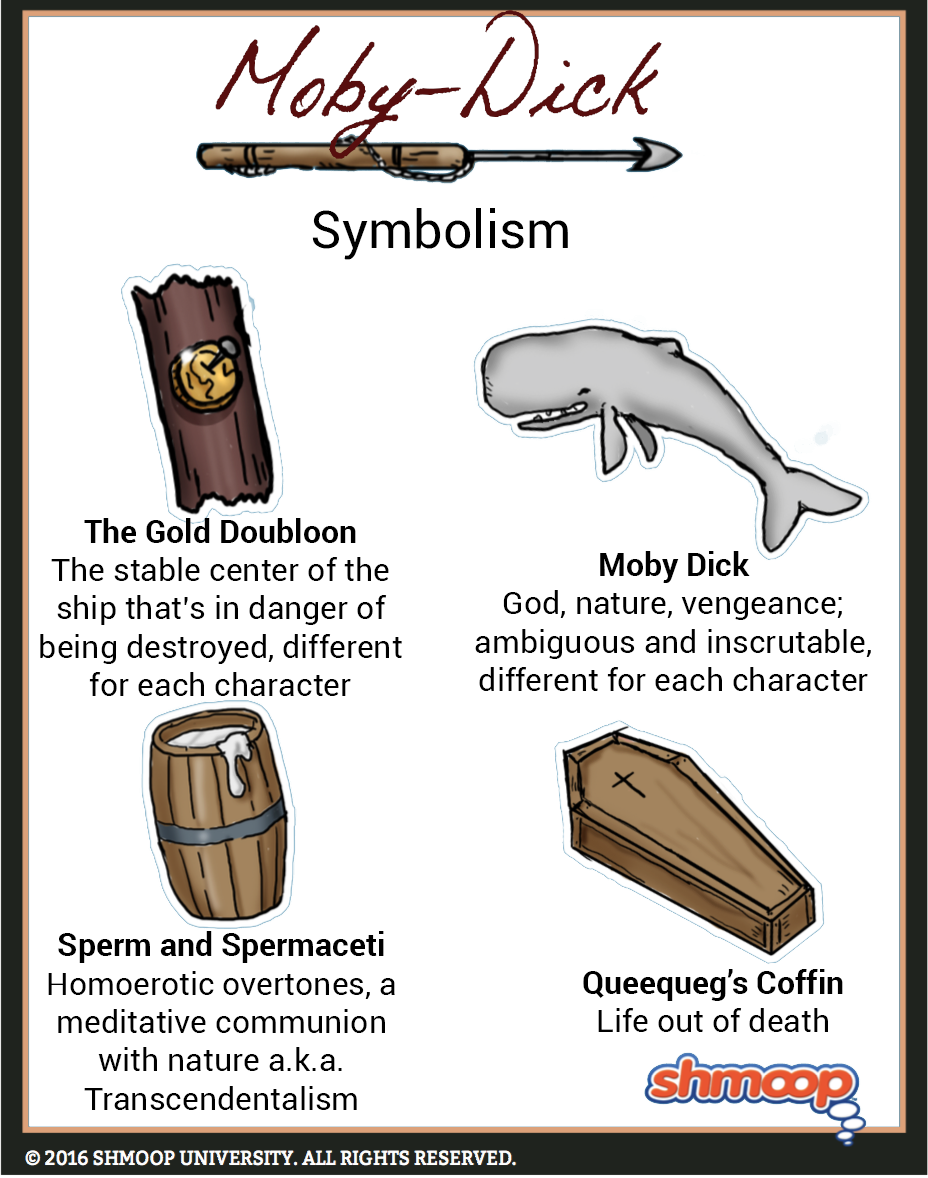Symbolism, Imagery, Allegory

(Click the symbolism infographic to download.)
The White _____
Humor columnist Dave Barry once gave potential English majors some advice using Moby-Dick as an example:
Never say anything about a book that anybody with any common sense would say. For example, suppose you are studying Moby-Dick. Anybody with any common sense would say Moby-Dick is a big white whale, since the characters in the book refer to it as a big white whale roughly eleven thousand times. So in your paper you say Moby-Dick is actually the Republic of Ireland. Your professor [... ] will think you are enormously creative.
Now, we here at Shmoop are always seeking creative readings, but we also don’t want to say any old lunatic thing about literature. If you’re read this far, you’re starting to figure out the difference between ambiguity and total randomness. Something can be ambiguous, and therefore have several possible interpretations, without being open to just any old reading you decide to pin on it.
There must be at least some textual evidence. (And, pro-tip, the more textual evidence the better.) So we don’t advise you to argue that Moby Dick represents Ireland. Still, there’s a good reason that Dave Barry chose Moby-Dick when he wanted to give an example of a Big Important Symbol that has many possible interpretations—and which is obviously demanding to be interpreted, possibly in a ludicrous way.
After all, here’s Ahab, who has "piled upon the whale’s white hump the sum of all the general rage and hate felt by his whole race from Adam down" (41.19). He’s making Moby Dick the object of every negative feeling any human being has ever had, ever.
Then there are the superstitious sailors, who start to think that Moby Dick is immortal and omnipresent and invincible, almost like God.
And then there’s Ishmael, analyzing the whale’s whiteness and concluding that it could represent anything from angels to atheism and listing all the different symbolic possibilities of the color white.
So what does the whale represent? God? Nature? Vengeance? Everything and nothing? You’ll be able to find a lot of different clues about what the whale could represent in the text, but many of them seem like red herrings (white herrings?—whatever, you get the idea) to us.
But I Got A Blank Space, Baby, And I'll Write Your Name
We think the most important clue indicating what the White Whale symbolizes comes at the end of Chapter 79, when Ishmael describes the whale’s forehead as having wrinkles and scars on it that look like hieroglyphics. Ishmael tells the reader,
If then, Sir William Jones, who read in thirty languages, could not read the simplest peasant’s face in its profounder and more subtle meanings, how may unlettered Ishmael hope to read the awful Chaldee of the Sperm Whale’s brow? I put that brow before you. Read it if you can (79.6).
If that sounds like a dare, it’s supposed to. Ishmael is admitting how crazy-hard it is to read and understand Moby Dick. He's presenting us with the whale’s inscrutability.
To an extent, we can’t really know the nature of the White Whale itself; in fact, if you notice, Moby Dick only shows up personally in three of the whopping 135 chapters of this book. What we can know is what the White Whale symbolizes in the minds of the various characters. We may not be able to interpret the White Whale itself, but we can decide how the characters’ interpretations of Moby Dick reflect who they are.